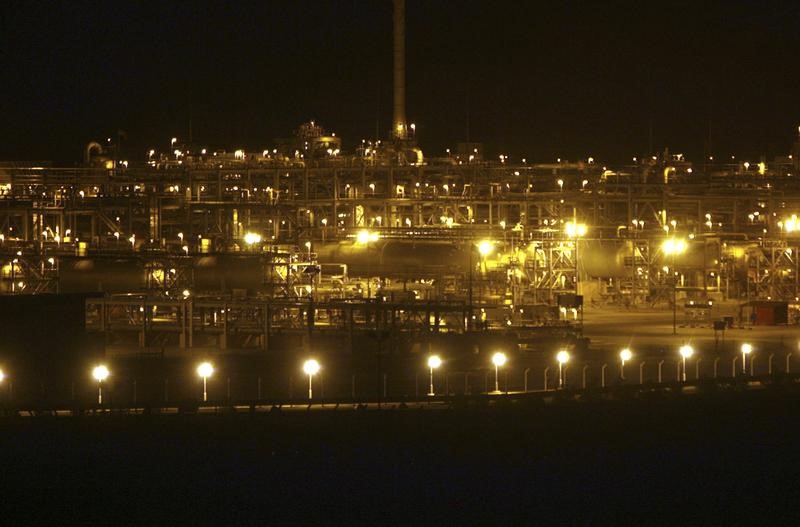By Rania El Gamal
DUBAI (Reuters) - Output or exports? OPEC members have argued for decades over which of the two they should monitor to gauge compliance with oil-output cuts.
This month, Saudi Arabia has thrown a third metric – supply - into the debate.
The move saw oil prices declining, with confused traders fearing Riyadh would pump more crude, thus complicating OPEC’s efforts to reduce a global glut and prop up the market.
But sources in Riyadh argue that those worries are overblown.
They say that while Saudi production could fluctuate slightly from month to month, supply will remain stable at around 10 million barrels per day (bpd), fully in line with the Saudi OPEC quota.
"What we are watching closely is the supply. Saudi Arabia will not supply the market more than 10 million bpd," a Saudi-based industry source said.
On Jan. 1, a deal between the Organization of the Petroleum Exporting Countries and some non-OPEC states to curb production by 1.8 million bpd came into effect.
Production is the volume of crude pumped from the wellhead, while supply is the amount of crude sent to the market, domestically and for export. This may vary from production on a monthly basis based on movement of barrels in or out of storage.
For the past couple of years, the difference between Saudi production and supply figures has not been large. Discrepancies in January and February were notable after the OPEC agreement as the market has focussed more on production and compliance.
Riyadh's plea for OPEC and market watchers to focus on Saudi supply rather than production or exports is driven by the kingdom's unique position in OPEC as a holder of huge stockpiles.
Saudi Arabia, the world's top oil exporter, has long been OPEC's only holder of significant spare capacity, a cushion to help smooth possible shortages in global supply.
Spare capacity can be achieved through increased pumping or by taking oil out of storage.
Riyadh expanded the latter over several decades as its domestic needs grew and new refineries were built.
Saudi oil inventories peaked in October 2015 at a record 329.43 million barrels but have declined every month since as the country drew down its stockpile to meet domestic demand without affecting exports.
At the end of December 2016, the kingdom held 272.621 million barrels of crude inventory – almost a tenth of all oil held in storage in industrialised nations, or members of the Organisation for Economic Cooperation and Development.
By comparison, the U.S. Strategic Petroleum Reserve, an underground facility in Louisiana and Texas that serves as the largest emergency supply in the world, has the capacity to hold more than 700 million barrels of oil.
DATA CONFUSION
Riyadh has often communicated two sets of output figures to the market: its pumped crude production, which it reports directly to OPEC, and a supply figure usually leaked to journalists by industry sources familiar with the matter.
Supply can give a fuller picture of how much oil is reaching the market and it is monitored by OPEC secondary sources as well as industry media such as Reuters, although production is the main metric used to gauge compliance.
The past two OPEC deals were also based on production.
Saudi sources say operational issues require the regular addition or withdrawal of oil from storage.
Saudi Arabia, which is responsible for a third of OPEC’s output and more than a tenth of global production, told OPEC its production increased to 10.011 million bpd in February from 9.748 million bpd in January.
But it later issued a statement saying its January supply was higher than output at 9.99 million bpd, meaning it drew oil from storage, while in February supply stood below output at 9.90 million bpd, meaning it moved oil into storage.
The current OPEC output quota for Saudi Arabia is set at 10.058 million bpd.
So when the market widely praised Riyadh in January for producing below its output target, the kingdom never said it was actually supplying more crude.
While the OPEC agreement focuses on compliance with production, not exports, some analysts have suggested exports will be key to help rebalance the market.
Olivier Jakob from Petromatrix consultancy said Saudi exports have declined over the past year much less than its output, partially due to reduced crude burn in winter and as the country tries to switch its power generation to natural gas.

"With a low level of reduction in Saudi crude oil exports versus a year ago and the increase from Iran, the Gulf region was exporting about 250,000 bpd more crude oil than a year ago. This has not allowed much of a rebalancing in the first quarter," said Jakob.